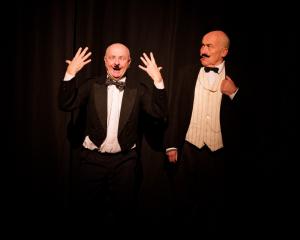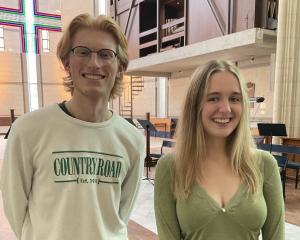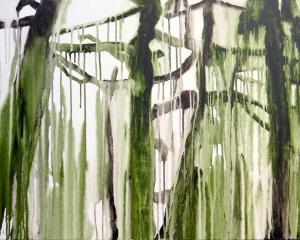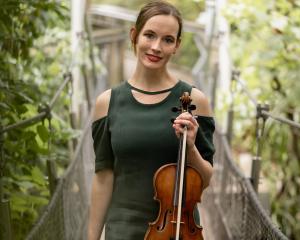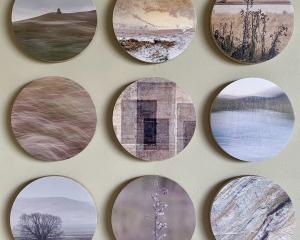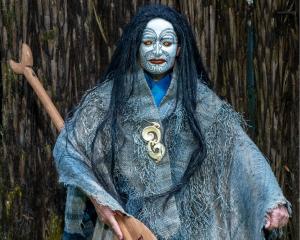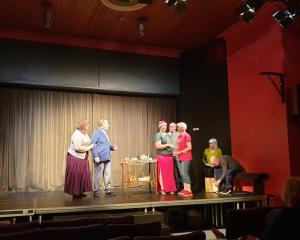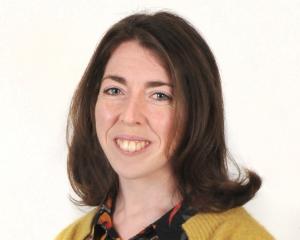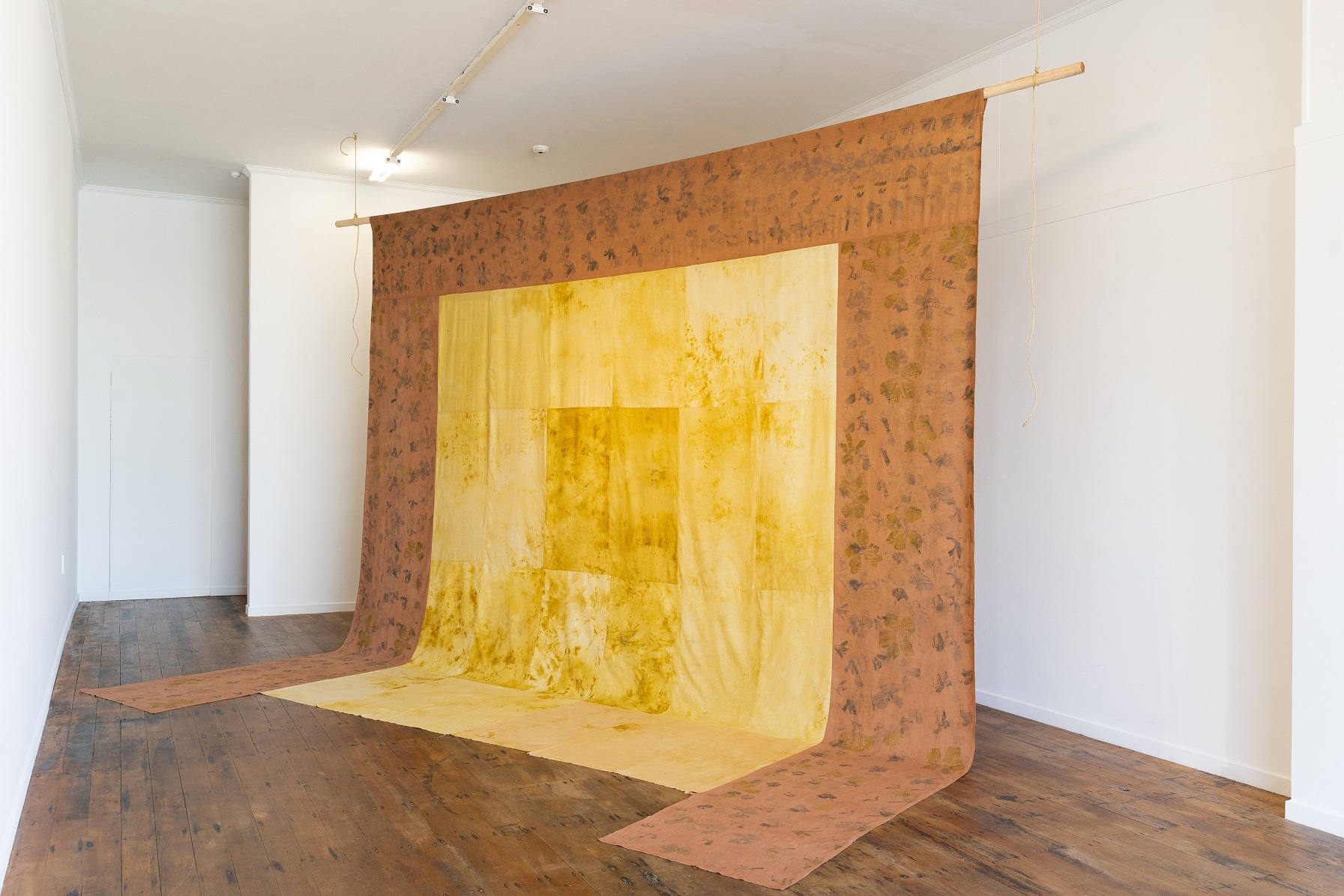
(Blue Oyster Project Space)
The centrepiece of this exhibition by Indo-Fijian textile artist and researcher Quishile Charan is a colour field of golden-hued genda phool, or marigold flowers. Drawing primarily on traditional dyeing techniques, "Araam" also speaks to the purpose and importance of craft practices and community.
Accompanying the textile works is a short film entitled A metal drum, a lovo pit & my parivar (2023), made in collaboration with the cinematographer Matavai Taulangau. The film carefully documents the dyeing process over the course of a day. It includes imagery of preparing the fabric, the placement of flowers, the fire pit and the duration of the steaming process. The film concludes with the unfurling of the fabric, as the artist inspects the outcome of the dyeing. The cinematography makes beautiful use of short depth of field, creating an intentional focus on the tasks at hand. Incidental, city soundscapes and quiet conversation make up some of the soundtrack intervals.
This exhibition is in its second iteration. It was commissioned by Artspace Aotearoa for the exhibition "Scores for Transformation" (June 24-August 19, 2023). After deinstallation, the textile works will be repurposed into usable household linen for the artist’s family. This multifunctional art/craft approach is intentional and communal.
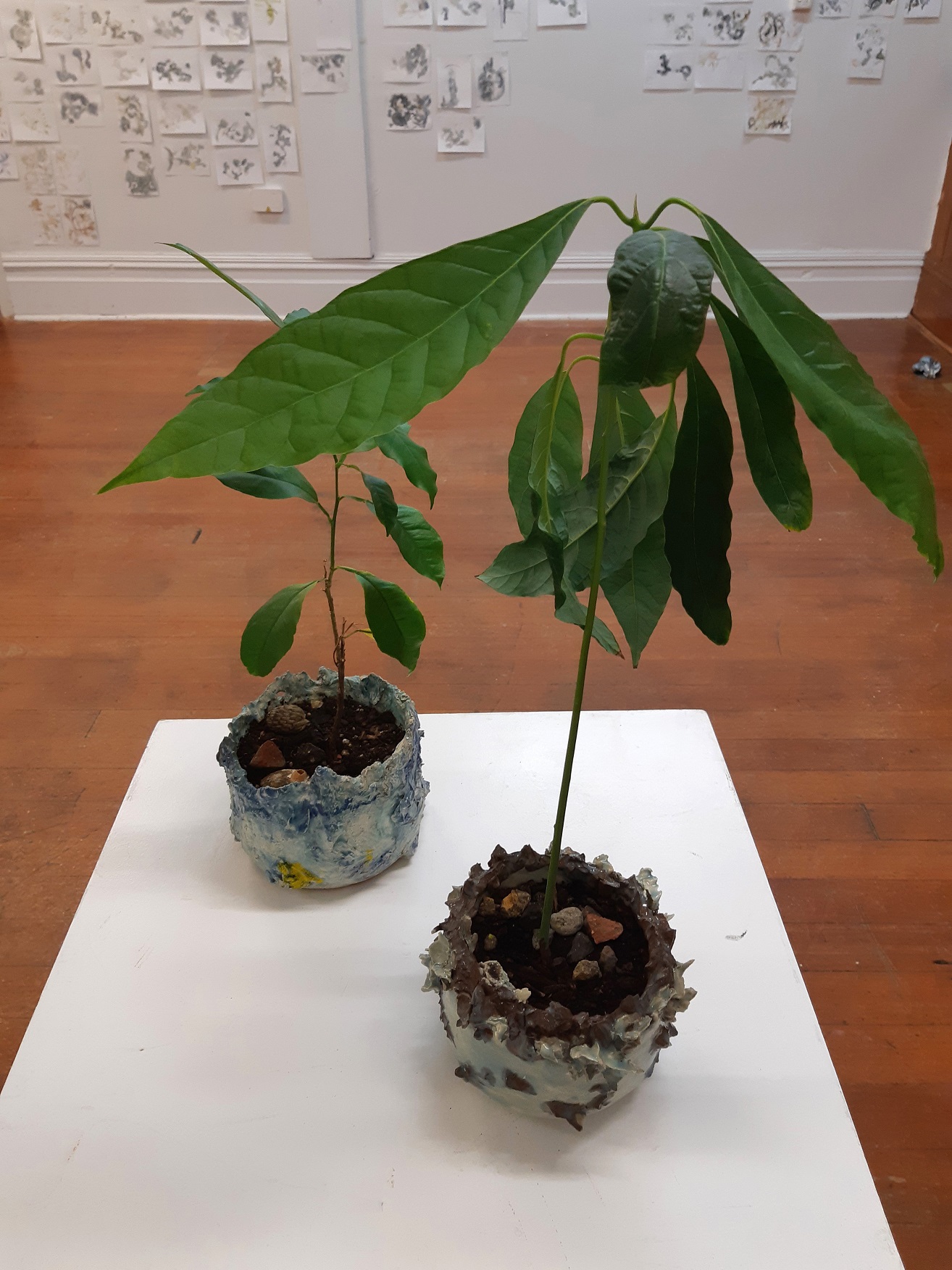
Lucy Hill, Motoko Kikkawa, Anna-Marie Mirfin
(New Lands: Gallery and Project Space)
"Unformed Experience" explores shared approaches to working with clay, or adjacent to it. Through drawing, pottery and sculptural installation, this exhibition presents subtle and experimental work made from materials close to hand — at home or in the garden.
Anna-Marie Mirfin works primarily with found materials that are often collected on the artist’s commute from home, in South Dunedin, to work, in the city centre. Mirfin’s take on clay includes tiny fragments of red brick or artificial polymer clay, for example. These materials are either infused with fresh flower petals, or fastened and linked in sequences by thread.
Lucy Hill’s drawings are also sequential. They read like abstract botanical illustrations, where the substance of the plant itself is used. These works convey the sense of a daily practice and they reflect a season of activity (spring). Hill works with organic matter from her home and garden — charcoal, mellow, sage, rhododendron, or clay, for example.
Motoko Kikkawa’s pottery privileges the imperfect and non-uniform, with small embellishments and sculptural elements in her signature calligraphic style. The pottery is also potted with plants grown from seed — a lemon tree, for example.
Experimental processes, media and site specificity emerge as overlapping aspects of these artists’ practices, and everyday life seems integral to the making.
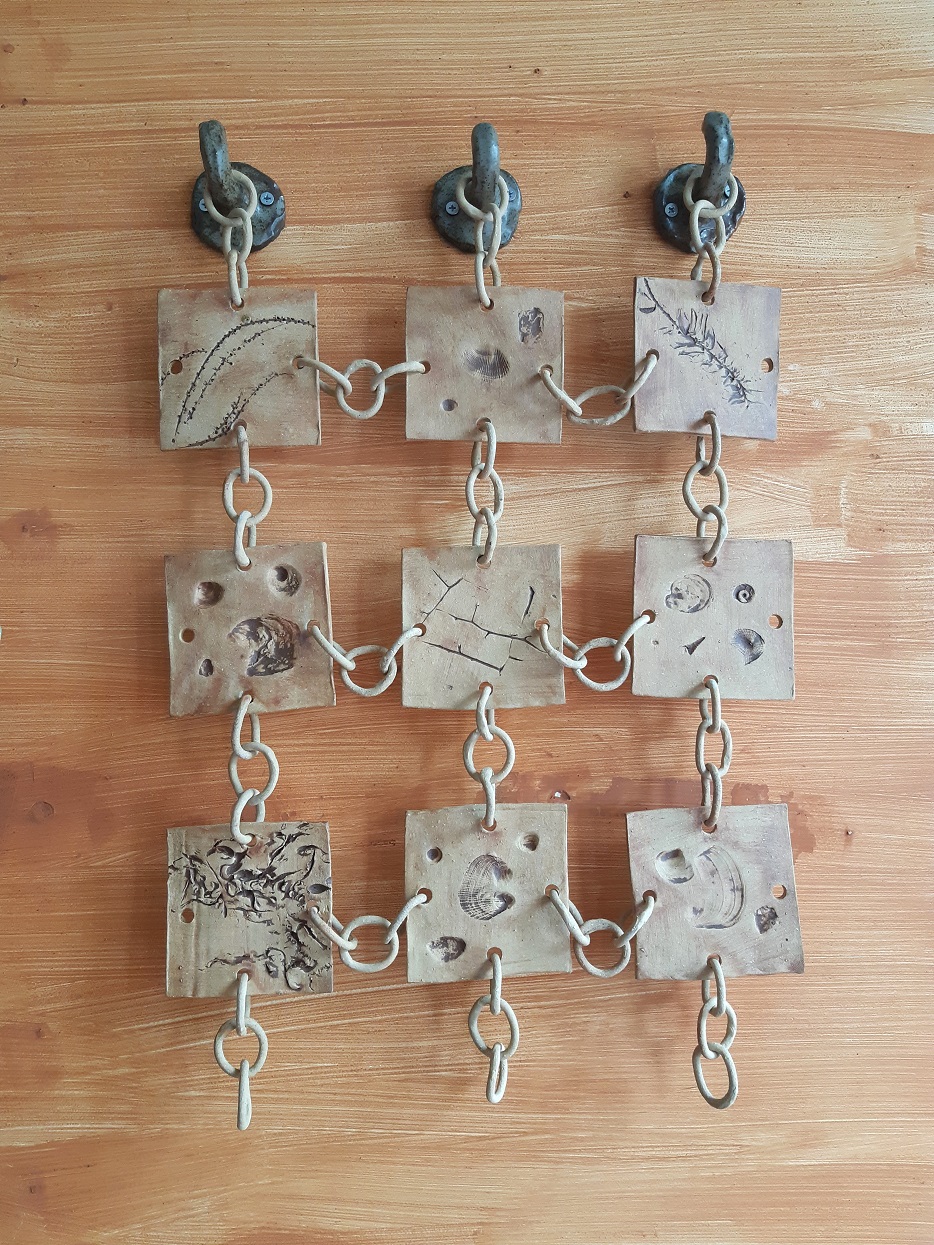
Jess Nicholson (Kāi Tahu, Pākehā), Moewai Rauputi Marsh (Kāi Tahu, Kāti Huirapa, Ngāti Kahungunu ki te Wairoa), Madison Kelly (Kāi Tahu, Kāti Mamoe, Pākehā)
(Tini Whetū Project Space, hosted by Evening Books)
Haerenga means journey and refers to a trip that Jess Nicholson, Moewai Rauputi Marsh and Madison Kelly took to collect kōkōwai. Of great significance to Māori art traditions, kōkōwai is used to make a red-ochre whenua pigment. The exhibition is a collaborative installation and reflection on shared experience, and kōkōwai has been used in unique ways.
Jess Nicholson has exhibited an ensemble of wall-mounted ceramic pieces. Nicholson often balances an approach to uniform tableware, with disruptive motifs such as chains, barbed wire, or hooks. In this exhibition, the artist has made a series of hooks, upon which hangs a loop of chain and a small grid of linked tiles. For the artist, these chain links are a metaphor for connection: "to whānau through whenua". There is a reference to tūmatakuru/matagouri that grows at the kōkōwai site, and Nicholson has incorporated kōkōwai in all the glazes.
Moewai Rauputi Marsh also commonly works with whenua pigments. In "Haerenga", Marsh is responsible for a vibrant field of kōkōwai colour that is painted directly into the installation space, supporting, framing and contextualising the exhibition.
"Haerenga" has been designed to unfold over the month, with the artists responding at different stages. At the time of writing, Madison Kelly’s contribution is yet to be installed, so watch this space!
By Joanna Osborne

